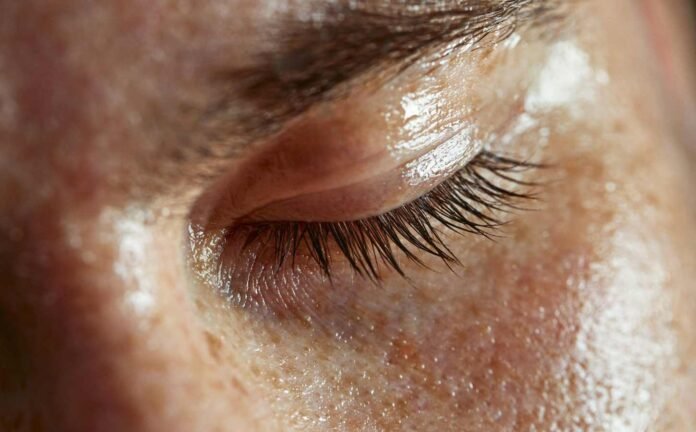Sleep-Onset REM Period is a phenomenon in which individuals enter into rapid eye movement sleep within the first 15 minutes of falling asleep.
This is in contrast to normal sleep patterns where REM sleep occurs after a period of non-REM sleep. SOREMP is a rare occurrence, with only a small percentage of the population experiencing it. However, it is a significant finding for sleep researchers and clinicians as it can be an indicator of underlying sleep disorders.
Diagnosing Sleep-Onset REM Period involves monitoring an individual’s sleep patterns through polysomnography, which records brain waves, eye movements, and muscle activity during sleep. SOREMP is classified as a type of REM sleep behavior disorder, which is characterized by abnormal movements during REM sleep. This disorder can lead to disrupted sleep, excessive daytime sleepiness, and other health complications.
Sleep disorders are a growing concern in modern society, with many individuals experiencing disruptions in their sleep patterns. Understanding the phenomenon of SOREMP and its classification within sleep disorders can help clinicians diagnose and treat underlying conditions. Further research into SOREMP may also provide insights into the mechanisms of REM sleep and its role in overall health and well-being.
Understanding Sleep-Onset REM Period
Characteristics of SOREMPs
Sleep-Onset REM Period (SOREMP) is a phenomenon where a person enters into Rapid Eye Movement (REM) sleep within 15 minutes of falling asleep. SOREMPs are considered abnormal as normally REM sleep occurs after 90 minutes of sleep onset. Individuals with SOREMPs may experience excessive daytime sleepiness, sleep paralysis, hypnopompic hallucinations, and other symptoms associated with sleep disorders.
Diagnosis and Classification
The diagnosis of SOREMPs is based on the results of the Multiple Sleep Latency Test (MSLT) and Polysomnography (PSG). MSLT is a test that measures the time it takes for a person to fall asleep during the day. PSG is a test that records brain waves, eye movements, and muscle activity during sleep. The International Classification of Sleep Disorders (ICSD-3) classifies SOREMPs as a type of central disorder of hypersomnolence.
Associated Conditions
Sleep-Onset REM Periods are associated with various sleep disorders such as narcolepsy, idiopathic hypersomnia, and central disorders of hypersomnolence. Narcolepsy is a neurological disorder that causes excessive daytime sleepiness, cataplexy, and other symptoms. Idiopathic hypersomnia is a sleep disorder that causes excessive daytime sleepiness without cataplexy or SOREMPs. Central disorders of hypersomnolence are a group of sleep disorders that cause excessive daytime sleepiness and other symptoms.
SOREMPs may also be associated with other sleep disorders such as obstructive sleep apnea, insomnia, REM sleep behavior disorder, Kleine-Levin syndrome, and neurological disorders. The sensitivity and specificity of MSLT and PSG in diagnosing SOREMPs may vary depending on the underlying condition.
In conclusion, understanding SOREMPs is important in the diagnosis and management of various sleep disorders. The use of MSLT and PSG in the diagnosis of SOREMPs can help identify underlying conditions and guide appropriate treatment.
Impact and Management
Living with SOREMP-Related Disorders
Individuals with Sleep-Onset REM Period (SOREMP) related disorders often experience significant impacts on their quality of life. Hypersomnia, hypersomnolence, and excessive daytime sleepiness can affect an individual’s ability to function at school or work, and can also impact their emotional well-being. In some cases, SOREMP-related disorders can lead to depression.
Muscle weakness during REM sleep can also be a concern for those with SOREMP-related disorders. This can lead to falls or other accidents, particularly if the individual experiences these episodes during the day.
Treatment Approaches
There are several treatment approaches available for individuals with SOREMP-related disorders. Modafinil is a commonly prescribed medication that can help to reduce excessive daytime sleepiness. Sodium oxybate is another medication that can be effective in managing SOREMP-related disorders, particularly for those with narcolepsy type 1.
Antidepressants may also be prescribed to help manage depression that may be associated with SOREMP-related disorders. Additionally, behavioral therapies such as sleep hygiene education and cognitive-behavioral therapy may also be helpful in managing symptoms.
For individuals with narcolepsy type 2, which is often associated with hypocretin deficiency, treatment may also involve addressing this underlying condition. This may involve the use of medications that target hypocretin deficiency, or other approaches that aim to increase the amount of hypocretin in the brain.
Overall, the management of Sleep-Onset REM Period-related disorders requires a comprehensive approach that addresses the underlying causes of the condition, as well as the symptoms that are impacting an individual’s quality of life. With appropriate treatment and management, individuals with Sleep-Onset REM Period-related disorders can often achieve significant improvements in their symptoms and overall well-being.

Discover the Tongue Trick for Better Sleep: The U.S. Marine’s Secret

This tongue trick is designed to help you fall asleep in just two minutes by stimulating a specific nerve in your tongue, known as the “sleep nerve,” to promote relaxation and better sleep.
Continue reading: Discover the Tongue Trick for Better Sleep
MaryRuth Organics Sleep Gummies Without Melatonin Review: Do They Work?

These gummies are designed to promote relaxation and support sleep quality for adults. Unlike many other sleep aids, they don’t contain melatonin, so you won’t wake up feeling groggy or drowsy.
Continue reading: MaryRuth Organics Sleep Gummies Without Melatonin



